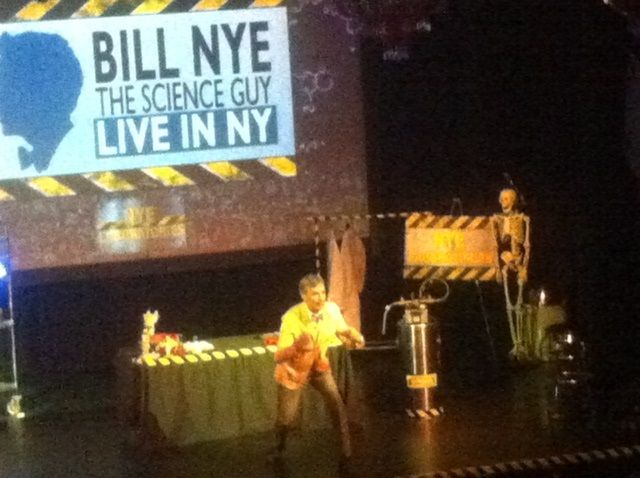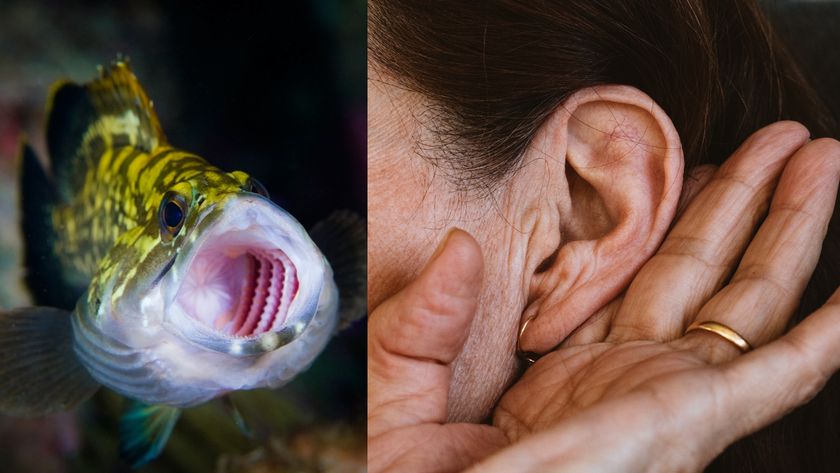Bill Nye Still Bringing Science Alive with Humor

NEW YORK — Bill Nye's lecture here on Sunday (July 20) felt more like a rock 'n' roll concert than a talk on science. All three shows sold out, lines to get into Irving Plaza wrapped around a street corner and stretched far down 16th Street, and Nye stepped onto the stage to thunderous applause and cheering.
"The Science Guy" has made headlines in the past year with his televised debate against creationist Ken Ham; his debut on the TV show "Dancing with the Stars," where he danced a jig to "She Blinded Me With Science"; and, most recently, the selfie he snapped with President Barack Obama and famed astronomer Neil deGrasse Tyson at the White House Student Film Festival in February.
Nye is best known for his 1990s TV show, "Bill Nye the Science Guy," that used humor to teach kids about the natural world. Nye's appearances are geared toward an older audience now, but humor still plays a key role. His appearance in New York City was labeled a "lecture," but to many in the audience, it felt more like the hybrid offspring of a lecture and a comedy show. [Next Generation: 5 Ways Science Classes Will Change]
"His use of humor is brilliant," said James Mitchell, who lives in Brooklyn and was in the audience on Sunday night. "It's the perfect way to communicate serious scientific topics."
Nye admitted how badly he wanted to host Saturday Night Live, commented that “bowties are cool,” in reference to the popular TV show Doctor Who and even quoted the rapper Jay-Z. But in between his jokes and puns, Nye discussed evolution, the future of space exploration and the possibility of a new TV show — and he even FaceTimed Tyson for a few minutes to chat about the 45th anniversary of the Apollo moon landing.
Nye — now CEO of The Planetary Society, a nonprofit organization that promotes scientific exploration — has become a science literacy advocate and has amassed a huge following since his return to the spotlight, thanks to his appeal to science-nerd culture.
During the show, he donned his familiar white lab coat and safety glasses for a few science demonstrations, and showed the audience how to tie one of his iconic bowties. Kids who watched the show in the '90s are grown up now, but the mostly adult audience members reverted back to childhood enthusiasm when Nye asked for volunteers to assist with his science demonstrations on stage.
Sign up for the Live Science daily newsletter now
Get the world’s most fascinating discoveries delivered straight to your inbox.
Nye said the best piece of advice he got from his parents was to leave the world better than it was when he entered it. The advice became the centerpiece of his "Bill Nye the Science Guy" TV show, he said. The primary objective, printed at the top of the TV show's original mission statement and rules, was simply "Change the world."
The phrase might sound grandiose, but it became Nye's catchphrase during his lecture as he spoke about his hope for the future of science. He directly addressed the kids in the audience and spoke about the importance of continuing to advance science. Nye said the invention of a better battery that would make alternative energy sources more efficient, or the search for life somewhere in the cosmos, "Could, dare I say it? Change the world!"
Follow Kelly Dickerson on Twitter. Follow us @livescience, Facebook & Google+. Original article on Live Science.












